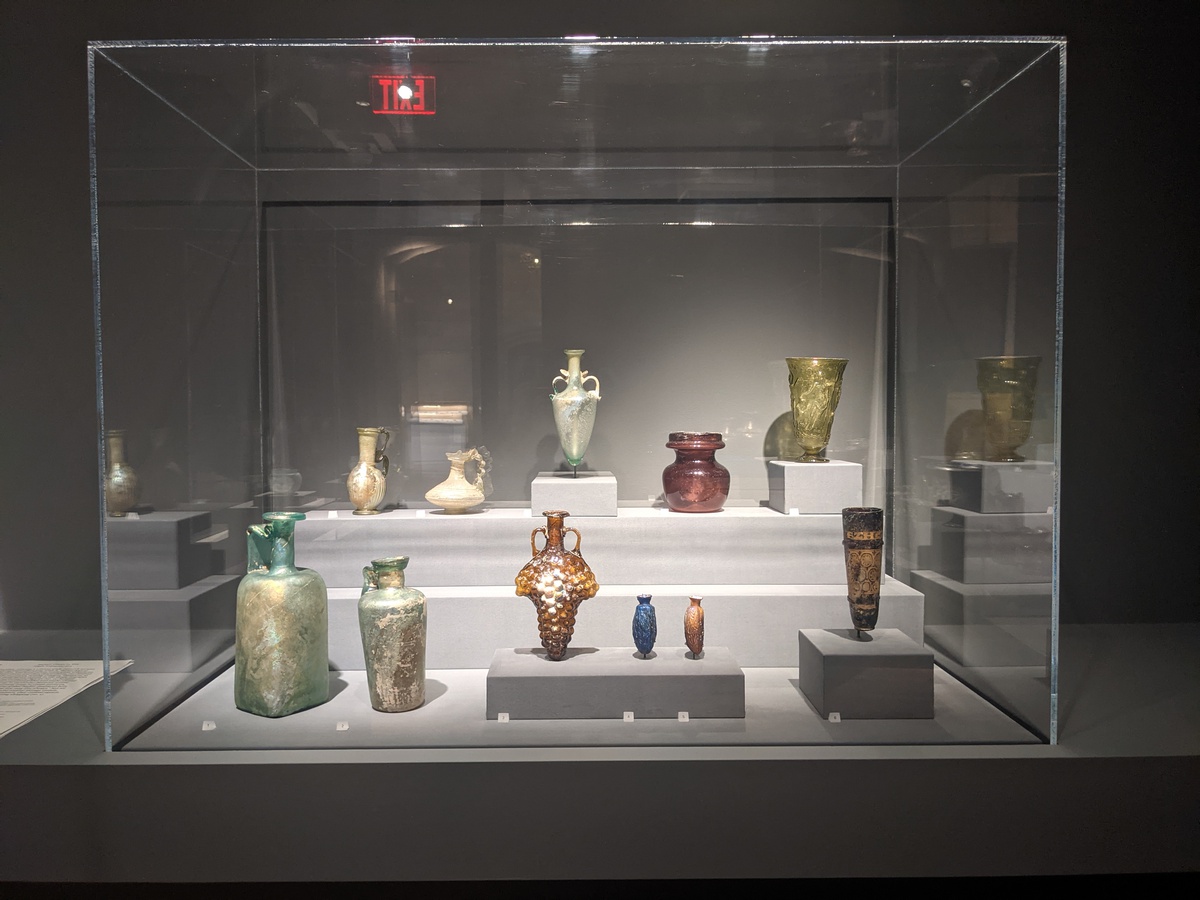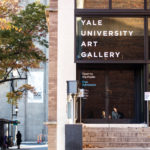Yale University Art Gallery showcases ancient glass collection
The Yale University Art Gallery, which holds one of the country’s finest collections of ancient glass, displays 56 glass pieces ranging from the 14th century B.C. to the seventh century A.D.

Audrey Kim, Contributing Photographer
A collection of 56 pieces of Near Eastern, Egyptian, Greek and Roman glass has gone on view at the Yale University Art Gallery. Held in the Mary and James Ottaway Gallery of Ancient Dura-Europos, the collection showcases works of glass that range from the 14th century B.C. to the seventh century A.D.
According to Associate Curator of Ancient Art Lisa Brody, the collection largely came from a special exhibition on ancient glass in fall 2017 called “Drink That You May Live,” which was also held at the Yale University Art Gallery. Most of the current works on display were also featured as part of that special exhibition. This exhibition differs because it will remain on view indefinitely.
“The Gallery has one of the two or three best collections [of ancient glass] in the country and it needs to be seen,” said Susan Matheson, the Molly and Walter Bareiss Curator of Ancient Art. “And when we saw how successful the [2017 exhibition] was, how positively it was received and how many people wanted to see more, we felt that we should go with a similar strategy here.”
Matheson, who has worked at the Gallery since 1974, noted that the collection also serves as a special point of interest for scholars, as research in ancient glass has increased over the last few decades.
“[When I started,] it was not a well-known collection,” Matheson said. “The scholarly study and understanding of ancient glass was nowhere where it is now. When I first started working on this collection, it was a fairly small body of literature, but [the research] has since really taken off.”
Organized in seven glass display boxes, the collection is mainly divided according to chronological order and technique. The pieces consist of works of mosaic glass, free-blown and mold-blown glass, core-formed and cast glass and vessels adorned with marbled and splashed glass or threads of molting glass. Highlights include a globular bowl by Ennion, one of the most famous glassmakers from the ancient Eastern Mediterranean world, which exists as one of 20 surviving vessels in the world that bear his signature.
Matheson said that she hopes viewers particularly appreciate the complexity of how these works were created.
“Glass objects went from a luxury item, to an everyday item, to a combination of luxury and everyday items,” Matheson said. “These earlier works were, at the time, very hard to make, and [people] didn’t understand much about the glass technique or the material itself. Then they started to use molds, which are easier to replicate, and then we have these freeblown pieces. We hope viewers can appreciate how [glass artisans] use the technique and material in a special way that could only be done with glass, which wouldn’t have been possible with a material like silver.”
Most of the works on display were donated as gifts from the first half of the 20th century, namely from the private Hobart and Edward Small Moore Memorial Collection and the Anna Rosalie Mansfield Collection. According to Matheson, although some of the glass works have been displayed before in the gallery, others have never been shown.
Brody said that the collection emphasizes both technique and artistry.
“I hope people seeing these works will remember that they’re glass and appreciate both the technique and the technology behind it, as well as the artistry,” Brody said. “It’s a combination of both craft and art, and we want visitors to appreciate the end result as a work of art, but also to remember what went into making it, and how it was made.”
Andrew Daubar, the Gallery’s exhibition production manager, works with curators to execute the installation of collections and exhibits. He explained that this collection is unusual due to the scale and size of the objects, and how the Gallery dimmed the lighting to spotlight the objects.
“Because these objects are so tiny and some of them have really fine detail, we tried to create a pretty dramatic environment,” Daubar said. “Our intention is that everything else [besides the art] disappears. We wanted a dark color [for the collection’s walls], because they have a tendency to bring the ceiling down, make for more of an intimate experience, and provide for more focused viewing of smaller objects and fine detail.”
Brody said that she hopes that viewers will walk away with a greater understanding of how these objects functioned. She also hopes the exhibition allows visitors to find an intimate connection with these objects, which would have been used in daily life.
“Ancient glass is, in a lot of museums, not displayed as much as a sculpture would be because of its fragility and rarity,” Brody said. “We hope that in this space, with the way it’s installed, visitors will spend time getting up close to these works and appreciate the details, artistry, beauty and all of these elements as part of our comprehensive understanding of art in the world.”
The display showcases 56 exquisite and rare examples of Near Eastern, Egyptian, Greek and Roman glass that range from the 14th century B.C. to the seventh century A.D. The selection represents the full spectrum of masterful techniques and styles developed during the early history of glassmaking, illustrating the high level of artistry achieved by glassmakers in the ancient world.
On view are works of mosaic glass, which inspired the later artisans of Renaissance Venice; free-blown and mold-blown glass; core-formed and cast glass; and vessels adorned with marbled and splashed glass, gilding or threads of molten glass. While the names of most ancient glassmakers are unknown today, the most accomplished among them did sign their works.
One of the most spectacular vessels in the installation is a bowl signed by the Roman glassmaker Ennion, a master of mold-blown glass in the early to mid-first century A.D.









